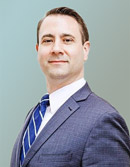Below you will find a real life case study of a couple who is looking for financial advice on how best to arrange their financial affairs. Their names and details have been changed to protect their identity. The Globe and Mail often seeks the advice of our VP, Wealth Advisor & Portfolio Manager, Matthew Ardrey, to review and analyze the situation and then provide his solutions to the participants.
![]()
Written by:
Special to The Globe and Mail
Published May 6, 2022

Inspired by the FIRE movement, Brandon and Michelle – both in their mid-30s – have built a portfolio of income-producing properties and dividend-paying stocks they hope will free them soon from having to work. Characterized by extreme saving and investing, FIRE stands for “financial independence, retire early.” It helps if you earn a good income.
Brandon earns $127,000 a year plus bonus and employer pension plan contributions, while Michelle earns $92,000 a year. Their combined employment income totals $238,000.
Michelle has a defined benefit pension plan partly indexed to inflation. They have two children, ages one and three.
Their aspirational goal is to “become financially independent, non-reliant on employment income, before 40,” Brandon writes in an e-mail. Ideally, they could live off their dividends and rental income. Their more realistic goal, perhaps, is to have enough rental and dividend income to allow them to work part-time – “resulting in about 50 per cent of current pay” – in five years or so, Brandon writes.
Their retirement spending goal is $120,000 a year. Achieving it on half the salary will be a challenge.
“When can our passive income cover our expenses?” Brandon asks.
We asked Matthew Ardrey, a vice-president and portfolio manager at TriDelta Financial in Toronto, to look at Brandon and Michelle’s situation. Mr. Ardrey holds the certified financial planner (CFP), advanced registered financial planner (RFP) and chartered investment manager (CIM) designations.
What the expert says
Brandon and Michelle are looking to pull back from full-time work in mid-2028, Mr. Ardrey says. “Before engaging in what would seem like a pipe dream for many Canadians in their mid-30s, they want to ensure they are on secure financial footing,” the planner says.
In addition to their principal residence, they have four rental properties. They also rent out an apartment in their home. Their rental properties generate $1,100 a month, net of all expenses including mortgage payments, and the unit in their home another $1,600 a month. Brandon earns $400 a month for managing a relative’s rental property.
Dividend income from their non-registered accounts is about $2,500 a year, Mr. Ardrey says. Brandon’s $15,000 of employer-matched contributions is going to a defined contribution pension plan. As well, they maximize their tax-free savings accounts and contribute $2,500 per child to their registered education savings plans each year. They have no unused contribution room in their registered plans.
“After all of these savings and their spending, they still have a $50,000 a year surplus, which they put toward non-registered savings,” the planner says. He assumes they divide this surplus 50/50 to maximize tax efficiency. “This amount grows annually at a projected 4.9 per cent rate until they reach semi-retirement and have to use some of it to supplement their lower income,” Mr. Ardrey says. Inflation is projected at 3 per cent.
In mid-2028, he assumes Michelle and Brandon reduce their work by 50 per cent. Brandon will be 39, Michelle 41. Brandon’s bonus and employer contributions to his DC plan end. Michelle’s DB pension contributions drop by half. Brandon is assumed to maximize his RRSP each year based on 50 per cent of his current salary.
Adjusted for inflation, Brandon will be earning $78,000 a year and Michelle $56,000. They’ll have $3,000 in dividend income, $6,000 in property management income and gross rental income of $93,000.
At the same time, their spending is forecast to increase, the planner says. “They feel that in another five years’ time, things will be drastically more expensive. As well, less work will provide more leisure time and increased expenses. Thus, they have requested we estimate spending of $10,000 per month starting when they semi-retire in 2028 and continuing thereafter, adjusted for inflation.”
They will still be about 17 years away from full retirement. They continue working part time until Michelle is 58, when she can get an unreduced pension. “At this point we assume they move to full retirement,” Mr. Ardrey says. Michelle will be entitled to an estimated pension of $37,845. Her pension is indexed 60 per cent to inflation, or 1.8 per cent.
In their first full year of retirement, Michelle’s pension will have risen slightly to $38,526, property management income $10,000 and gross rental income $154,000. The mortgages will be paid off.
At age 65, they will start collecting Canada Pension Plan benefits (estimated at 70 per cent of the maximum) and full Old Age Security. “Under these assumptions, they meet their retirement spending goal of $120,000 a year after tax,” Mr. Ardrey says.
“However, when we stress test the scenario under the Monte Carlo simulator, their probability of success drops to 77 per cent, which is in the ‘somewhat likely’ range of retirement success,” he says. A Monte Carlo simulation introduces randomness to a number of factors, including returns, to test the success of a retirement plan. For a plan to be considered “likely to succeed” by the program, it must have at least a 90 per cent probability of success.
“Looking at their portfolio construction, it is great for accumulation, but the inherent volatility of an all-equity portfolio is less desirable for drawdowns,” Mr. Ardrey says. They have a portfolio of exchange-traded funds with a geographic breakdown of 55 per cent U.S., 25 per cent international and 20 per cent Canadian.
As they approach semi-retirement, Brandon and Michelle could benefit by diversifying their portfolio by adding some non-traditional, income-producing investments, such as private real estate investment trusts that invest in a large, diversified portfolio of residential properties, or perhaps in specific areas such as wireless network infrastructure, mainly in the United States, the planner says. Such investments are not affected by ups and downs in financial markets.
“By diversifying their portfolio, we estimate they could add at least one percentage point to their overall net return – taking it to 5.9 per cent – and significantly reduce the volatility risk of the portfolio.” In conclusion, Brandon and Michelle are on track to achieve something only most Canadians can dream of,” Mr. Ardrey says, “semi-retirement by their early 40s and full retirement before 60.”
Client situation
The people: Brandon, 33, Michelle, 35, and their two young children.
The problem: Can they achieve financial independence in six years’ time, allowing them to work part-time and still spend $120,000 a year?
The plan: Keep saving and investing. Go part-time in 2028 and retire fully at Michelle’s age 58, when she gets her pension. Add some non-traditional, income-producing assets to their investments as they approach retirement.
The payoff: Plenty of time off to reap the benefits of their hard work while they are still relatively young.
Monthly net income: $13,910
Assets: Cash $14,000; exchange-traded funds $100,000; his TFSA $153,000; her TFSA $127,000; his RRSP $154,000; her RRSP $44,000; market value of his DC pension $188,000; estimated present value of her defined contribution pension $125,000; registered education savings plan $46,000; rental units $915,000; residence $605,000. Total: $2.47-million
Monthly outlays: Residence mortgage $1,700; property tax $385; water, sewer, garbage $145; home insurance $70; electricity, heat $255; maintenance $200; transportation $435; groceries $900; child care $415; clothing $230; gifts, charity $375; vacation, travel $300; dining, drinks, entertainment $555; personal care $50; pets $80; sports, hobbies $30; health care $75; communications $130; his DC pension plan $1,000; RESP $415; TFSAs $1,000; her DB pension plan contributions $1,000. Total: $9,745. Surplus $4,165
Liabilities: Residence mortgage $428,000; rental property mortgages $707,000. Total: $1,135,000
Want a free financial facelift? E-mail finfacelift@gmail.com.
Some details may be changed to protect the privacy of the persons profiled.

Matthew Ardrey
VP, Wealth Advisor & Portfolio Manager
matt@tridelta.ca
(416) 733-3292 x230
